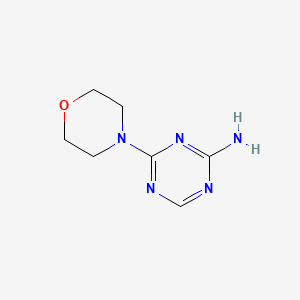|
Name: 5-Methoxy-3,4-methylenedioxyamphetamine
Type: Psychedelic phenethylamine
AKA: MMDA

|
|
II. Natural Derivative
Synthetic substance, no natural derivative
 |
|
III. Chemical Profile (IUPAC name)

|
|
IV. History
5-Methoxy-3,4-Methylenedioxyamphetamine, a synthetic psychedelic, was developed in the 20th century. It is part of research into new psychoactive substances and their effects on serotonin receptors.

|
|
V. Legal Information
5-Methoxy-3,4-methylenedioxyamphetamine is a psychedelic compound with hallucinogenic properties. It is classified as a Schedule I controlled substance in the U.S. and faces similar international restrictions due to its potential for misuse and abuse. [Source: UNODC].
US Federal Schedule - I
Schedule I drugs, substances, or chemicals are defined as drugs with no currently accepted medical use and a high potential for abuse. Some examples of Schedule I drugs are: heroin, lysergic acid diethylamide (LSD), marijuana (cannabis), 3,4-methylenedioxymethamphetamine (ecstasy), methaqualone, and peyote.
Key US Federal Policies:
Controlled Substances Act. Public Law: Public Law 91-513 (text can be found on GovInfo) (https://www.dea.gov/drug-information/csa). Date enacted: October 27, 1970.
|
|
VI. Physical Effects
5-Methoxy-3,4-methylenedioxyamphetamine (5-MeO-MDA) is a psychedelic and empathogen discovered in the 1980s. It acts as an upper, producing euphoria and altered sensory perception. Physical impacts include increased heart rate, dilated pupils, and possible hypertension. Short-term effects can include hallucinations and anxiety, while long-term use may lead to cognitive impairments and psychological dependence. Overdose risks involve severe agitation, hyperthermia, and cardiovascular strain. Safe use involves moderation and monitoring of dosage. Recent research examines its effects on serotonin systems and its potential therapeutic uses.  |
|
VII. Psychological Effects
5-Methoxy-3,4-methylenedioxyamphetamine (MDA), a psychedelic, affects serotonin systems, causing profound changes in mood and perception. Immediate effects include euphoria and altered perception, lasting several hours. Long-term use can lead to psychological issues such as anxiety and cognitive decline. Research indicates significant mental health risks with chronic use, including potential for severe mood disturbances and addiction.
 |
|
VIII. Culture
5-Methoxy-3,4-methylenedioxyamphetamine (MMDA) is a psychoactive amphetamine derivative, producing stimulant and hallucinogenic effects, classifying it as both an upper and a psychedelic. It enhances sensory perception and induces euphoria. Short-term use can increase heart rate and blood pressure, while long-term use may lead to neurotoxicity and psychological dependence. Overdose risks include hyperthermia, seizures, and cardiovascular complications. Safe dosages range from 10-20 mg. Research is sparse but suggests potential therapeutic uses alongside significant abuse risks. Pupils often dilate, and users may experience increased energy and empathy.
 |
